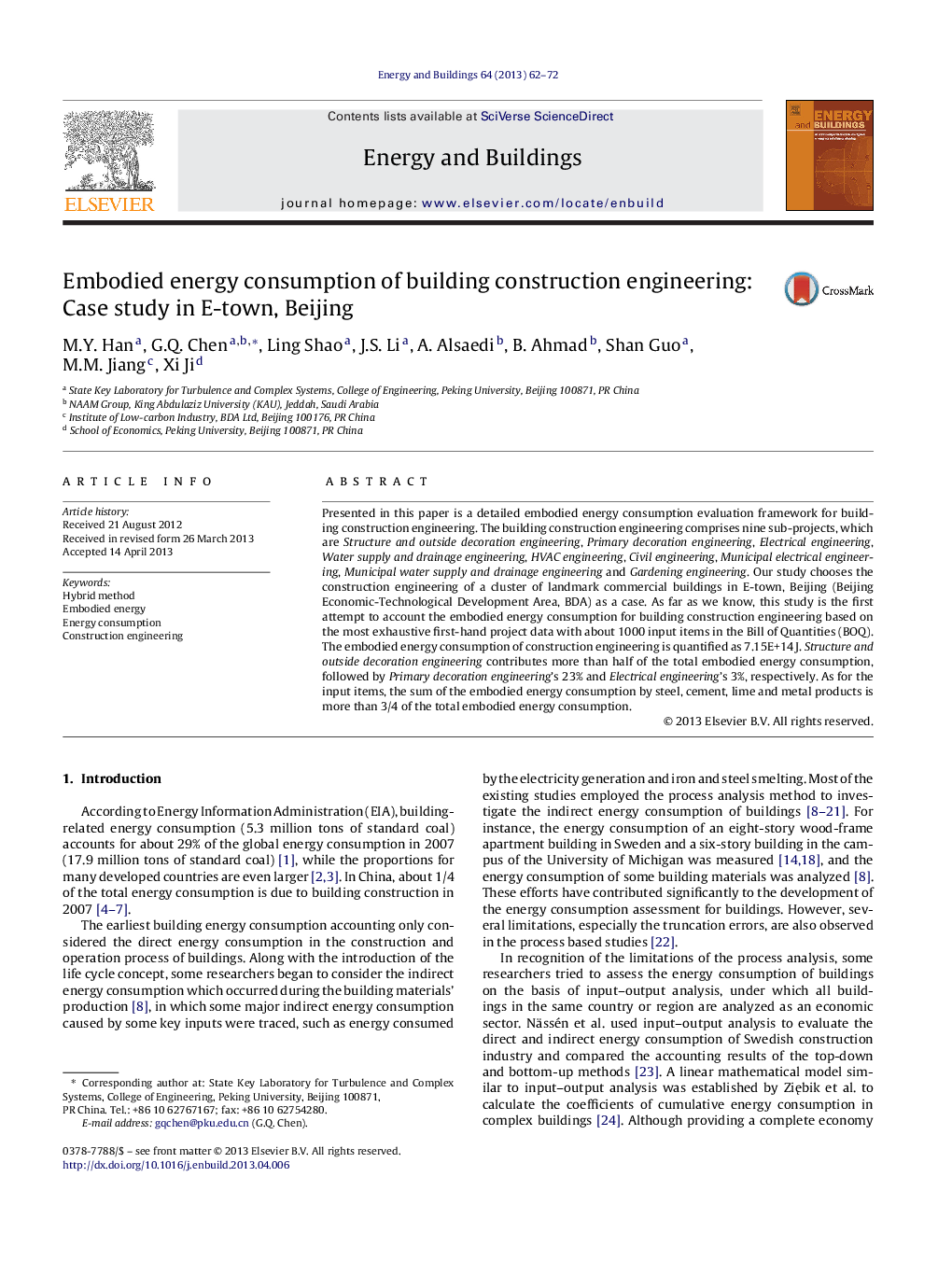| کد مقاله | کد نشریه | سال انتشار | مقاله انگلیسی | نسخه تمام متن |
|---|---|---|---|---|
| 263382 | 504074 | 2013 | 11 صفحه PDF | دانلود رایگان |

• The embodied energy consumption of construction engineering is quantified.
• The hybrid method as a combination of process and input–output analyses is adopted.
• Energy consumption accounting procedure for construction engineering is presented.
• Six buildings in Beijing Economic-Technological Development Area, BDA are studied.
• The first-hand project data with around 1000 input items in the BOQ are adopted.
Presented in this paper is a detailed embodied energy consumption evaluation framework for building construction engineering. The building construction engineering comprises nine sub-projects, which are Structure and outside decoration engineering, Primary decoration engineering, Electrical engineering, Water supply and drainage engineering, HVAC engineering, Civil engineering, Municipal electrical engineering, Municipal water supply and drainage engineering and Gardening engineering. Our study chooses the construction engineering of a cluster of landmark commercial buildings in E-town, Beijing (Beijing Economic-Technological Development Area, BDA) as a case. As far as we know, this study is the first attempt to account the embodied energy consumption for building construction engineering based on the most exhaustive first-hand project data with about 1000 input items in the Bill of Quantities (BOQ). The embodied energy consumption of construction engineering is quantified as 7.15E+14 J. Structure and outside decoration engineering contributes more than half of the total embodied energy consumption, followed by Primary decoration engineering's 23% and Electrical engineering's 3%, respectively. As for the input items, the sum of the embodied energy consumption by steel, cement, lime and metal products is more than 3/4 of the total embodied energy consumption.
Journal: Energy and Buildings - Volume 64, September 2013, Pages 62–72